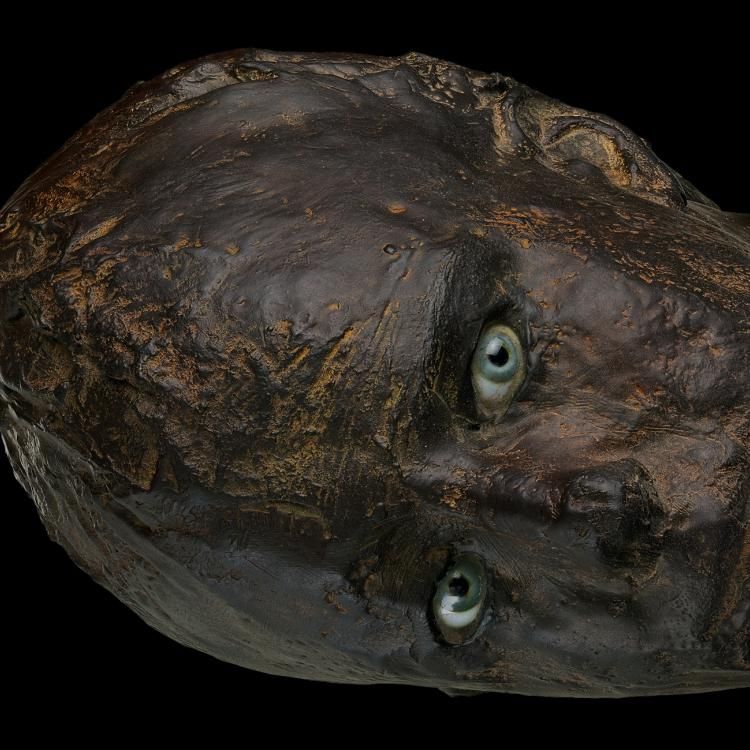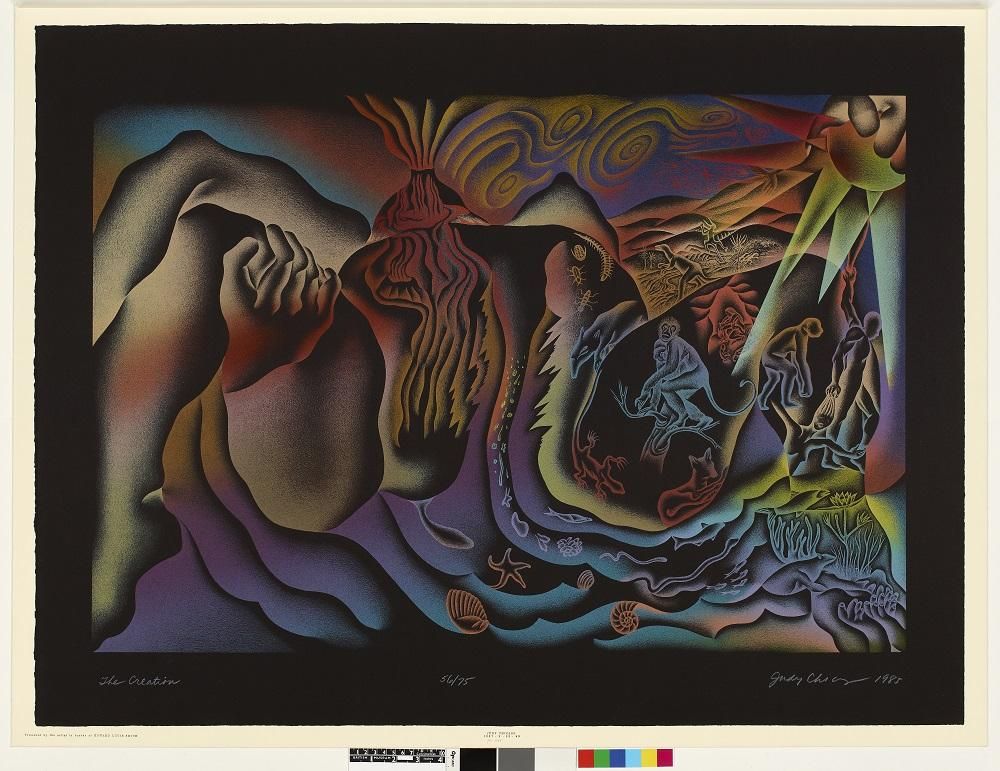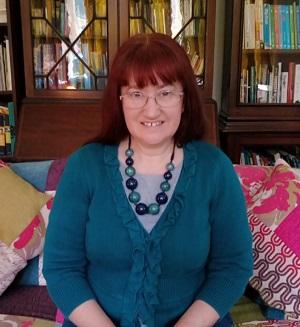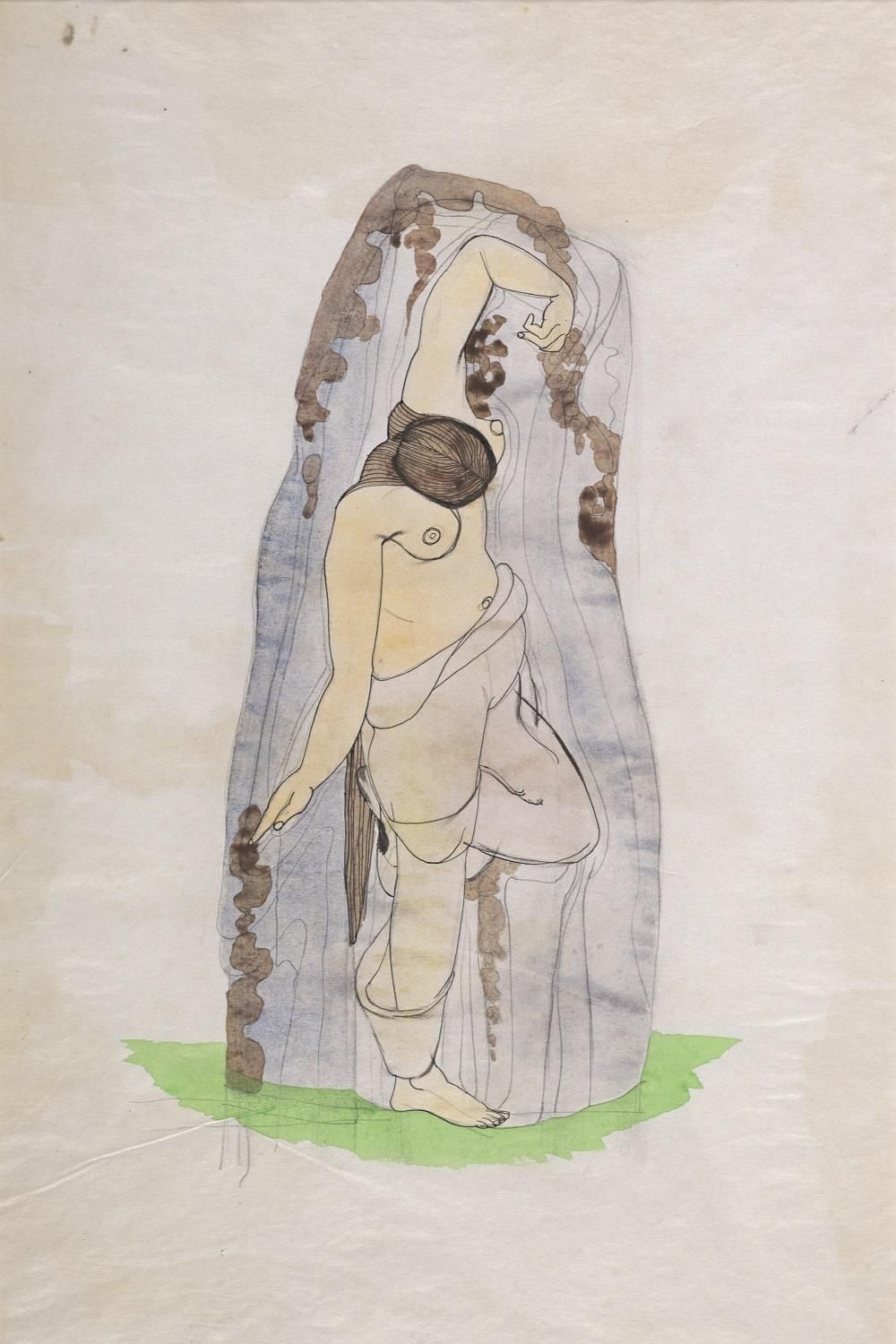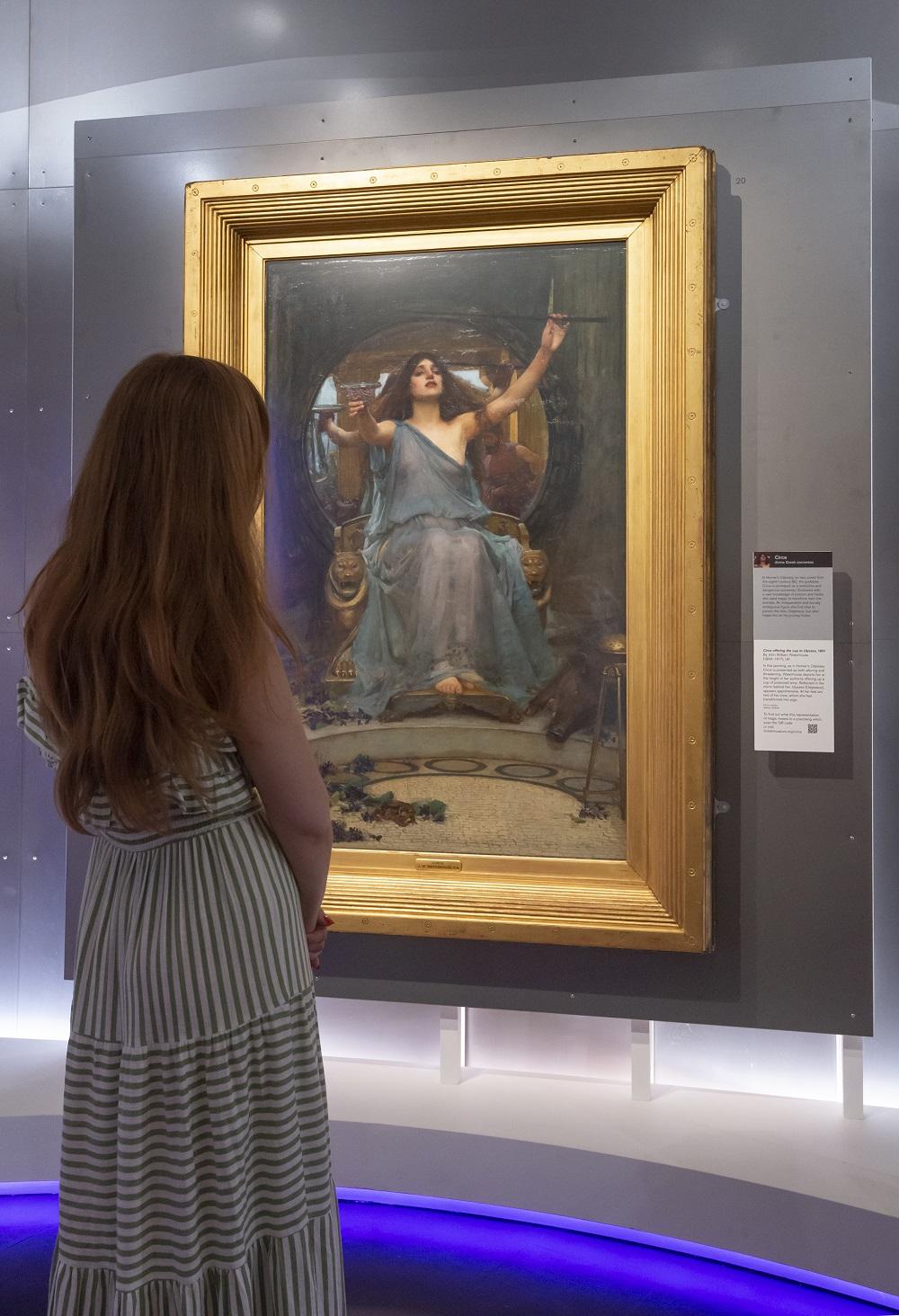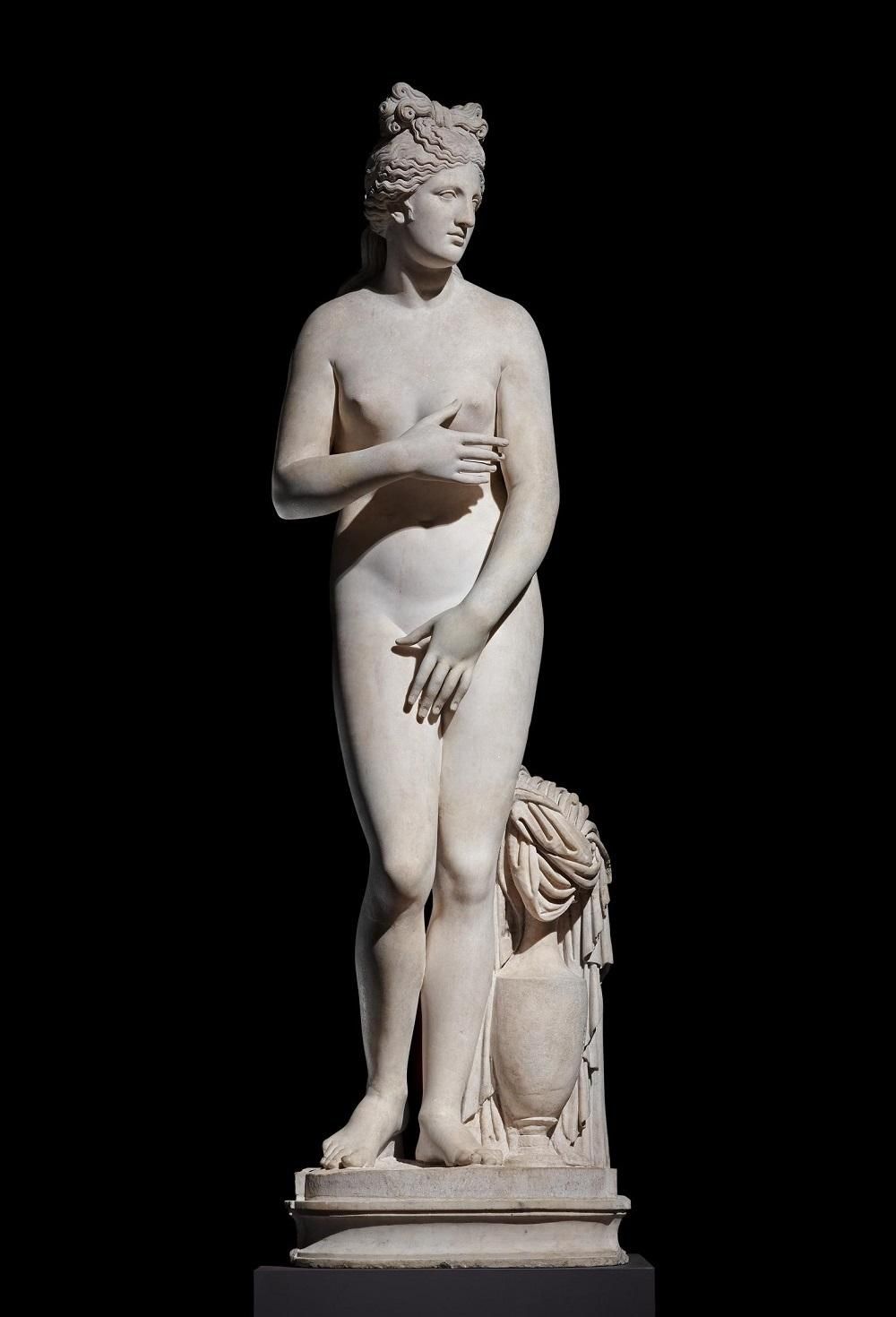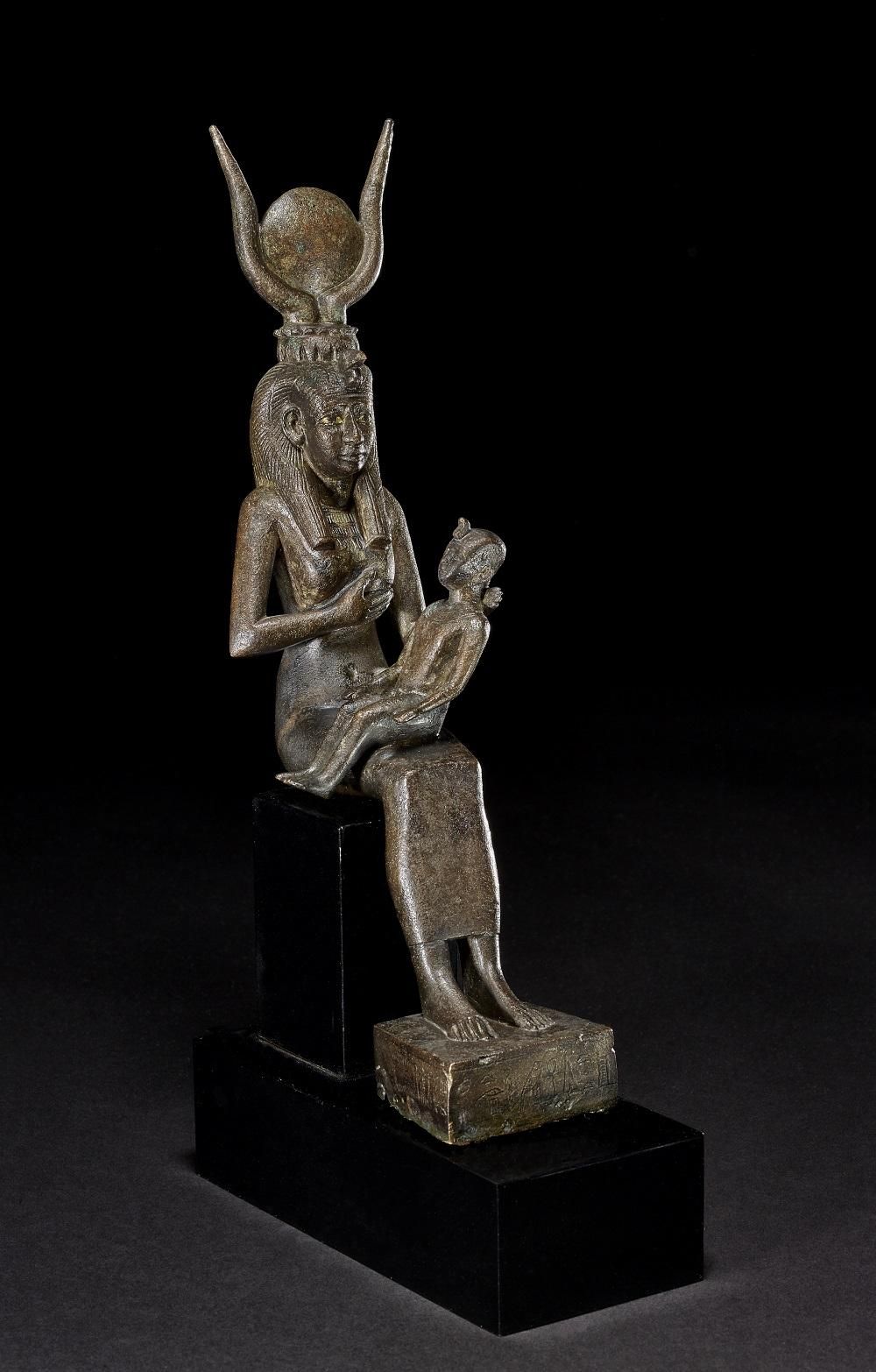As the 'exhilarating' (The Guardian) exhibition approaches its final month, we asked five community consultants, who contributed to the development of the exhibition, to respond to an object in the exhibition that relates to them as women but also to their pagan and witchcraft beliefs and practices.
Content slice
Working collaboratively with communities
In mid-May, the British Museum opened the thought-provoking, cross-cultural exhibition Feminine power: the divine to the demonic. This show explores the profound influence of female spiritual beings within global religion and faith and explores the significant role that goddesses, demons, witches, spirits and saints have played – and continue to play – in shaping our understanding of the world.
Working collaboratively and consulting with community partners and those who feel a deep personal or cultural connection to the Museum collections is a central part of many British Museum projects. For the Feminine power exhibition, which explores the spiritual beliefs of both past and present communities, it was particularly important to consult with those whose contemporary spiritual practices and beliefs are represented through the objects and artworks on display.
When working on the part of the exhibition themed around 'magic and malice', the Museum team was keen to learn as much as they could about modern witchcraft and practice from people who themselves identified as Witch, Wicca or who use magic in their spiritual practices. By including these voices directly alongside the Museum perspective in the exhibition, we were able to highlight the voices of people whose perspectives and beliefs are not often seen in museum displays. To gain this further insights into Modern Paganism and Witchcraft, the Museum partnered with UK-based witchcraft membership organisation Children of Artemis and some of its long-standing associates.
The exhibition team consulted with a group of six members and associates of Children of Artemis over an eight-month period, exploring different artworks that would go on display in the exhibition and listening to the lived experiences and unique personal insights of each of the participants. This work helped inform the exhibition and helped the team to convey the continued relevance and power that the goddesses and associated spiritual beliefs still hold for people today.
Below are five objects chosen by just some of our community consultants and what they mean to them.
Jenny
Jenny Cartledge community partner and consultant for Feminine power
I'm Jenny and I follow an eclectic pagan path. I love writing about paganism and speak regularly at Witchfest events.
When I saw Judy Chicago's The Creation, my initial reaction was shock at the vulgarity of it. A feminine figure laid bare, legs spread showing her most intimate parts. I am not usually a fan of modern art, but the abstractness pulled me back in and I was then able to appreciate what it was I saw. Through my pagan eyes, it was the Earth Mother, giving birth to all life.
Chicago has beautifully captured the goddess giving birth, her hands holding her legs open, the volcano at her breast depicting the deep pain. The array of colours echoes the broad spectrum of life springing forth from her vulva, and Chicago shows the stages of evolution from the smallest microbe to the ascent of man, including my favourite bit, a little dinosaur. I cannot express how excited I was by the dinosaur! It acknowledges all life that has gone before and fully accepts science too, as there are some Christians who have denied their existence. All life comes from the Goddess, no matter where it comes in our timeline.
The twist – the part I found most disturbing – was no longer the initial reaction of her lying exposed but the man to the right, grabbing the hair of a woman, club raised high. Perhaps a take on the Victorian myth that a man would club a woman over the head and drag her back to his cave. However, the comparative size of the small caveman, who seems swept away by the life force emerging from the woman, makes it clear that women are powerful: we are creators of life and we are goddesses. This strongly accords with the values of female empowerment and sovereignty in many pagan paths.
Lucya Starza, community partner and consultant for Feminine power
I am a pagan writer and eclectic witch with a background in Gardnerian Wicca as well as family traditions of folk magic. I have many years' experience of practicing, writing about and teaching those topics.
Ithell Colquhoun's painting, Dance of the Nine Maidens, resonates with the feelings I get when I visit stone circles on the Cornish and Devonshire moors. I believe the picture shows a woman merging with a megalith, although some people see it more as a woman draping herself over the rock. The stones seem to tingle when you touch them and the land seems to hum with magical potential that a visionary artist – or a witch – taps into. In legends, several of the stones are said to be women or girls who were turned to stone as punishment for dancing on a Sunday. Colquhoun certainly saw ancient megalithic sites as conduits for divine feminine energy, which is one way of interpreting this work. Although the stone circles predate Christianity and are not actually petrified people, there's still potency in myth and legend.
Looking at the painting in the Feminine power exhibition, I see the image of a pregnant woman caught in the act of dancing. She's holding hands with other figures already within the stone. I feel as though the dance goes on and is eternal. Patriarchy might force women's power underground but it can never really contain it. The faint outlines of figures behind the main woman in the picture seem to be to have become immortal spirits, inviting others to join them and dance. The artist believed stone circles were places where subterranean energy could be tapped into, and that's something I can relate to as a modern pagan and witch.
Laura Daligan, community partner and consultant for Feminine power
Laura Daligan is an artist, workshop creator and Pagan Witch who is currently doing an MA in Viking Studies at the University of Highlands and Islands.
When visiting the homes of fellow witches or pagans it is commonplace to find a Waterhouse print adorning their walls, and Circe offering the Cup to Ulysses is one of the most popular pagan poster girls. But, given that she is quite clearly an object of the Victorian male gaze here, with her translucent gown barely covering her naked body, you might ask how this tallies with the feminist stance of modern witchcraft which is an empowering path that has a focus on reclaiming female power. So I would like to explain why this painting has a special place in the hearts of many practicing pagans.
In Waterhouse's painting we see Circe as sensual, confident and at the height of her powers. She dominates the scene, sitting upon an ornately carved seat, arms raised, holding a cup and wand, while incense smoulders below. These magical tools resonate with witches as they are often used in modern rituals and magical workings. Incense purifies the air, wands are used to direct energy and cast circles, and cups are used to honour the element of water. However, our cups aren't usually filled with poison as Circe's was! Circe's forte was creating transformative elixirs from flowers and herbs, and the art of healing or hexing with herbs has been one of the main roles of witches throughout history. The idea of nakedness in ritual is also something many witches embrace, as an open expression of our natural power. Circe is radiant and in control here, in contrast with Ulysses, who is reflected skulking in the mirror.
Despite its issues, this painting captures a moment of power and enchantment, which I feel many witches have experienced in their connection with the divine. That, in my opinion, can only be a positive thing.
Olivia Ciaccia, community partner and consultant for Feminine power
Olivia Ciaccia is an author and PhD candidate researching the revival of ancient goddesses in 21st century Goddess Spirituality.
Aphrodite and Venus are my most beloved goddesses and I am very glad they were included in the show as I don't think a cross-cultural exhibition on feminine power would be complete without them. To me, they embody the complexity of feminine power, as well as the ways this has been demonised and diminished. Modern portrayals of ancient Greece's Aphrodite and Rome's Venus, are often one-dimensional, hyper-sexualised and formed through a Eurocentric male gaze. In many ways this statue could be interpreted to reaffirm this but, I was delighted to see that the curators challenged this perspective. The exhibition label for this statue names her 'goddess of passion', prompting visitors to consider the more progressive role of passion in human life and how it often influences important decisions we make, for better or worse. The accompanying objects, labels, and Mary Beard's commentary elaborate on this. Together they explain how Aphrodite and Venus' feminine power is multifaceted, encompassing erotic and romantic union, as well as persuasion in political and mercantile pursuits and 'the unswayable, unstoppable power of desire that brings Rome its military victories'.[1] The exhibition challenges simplified stereotypes of erotic feminine power and sexual agency, emphasising its far-reaching consequences without demonising, or belittling it.
This is important to me as a feminist, because I recognise that the way our society views goddesses, such as Aphrodite and Venus, has repercussions for how we think about women today. It is also spiritually important to me that more people understand that these goddesses are far more complex than first impressions might lead them to believe, and that reclaiming Aphrodite, Venus, and marginalised genders in this way is an empowering, subversive, magical act.
Raegan Shanti, community partner and consultant for Feminine power
Raegan Shanti is a solitary eclectic Pagan and a contributor to the Children of Artemis. Her writings have been published by Moon Books and the Wolfenhowle Press.
I think it is cause for celebration that every single object in the Feminine power exhibition showed us a different aspect of feminine experiences of the world, reflected in the depictions and stories of divinity.
For me, the most poignant object was the statue of the Egyptian Goddess Isis, with her young son Horus on her lap. She is holding her left breast and aiming it towards her baby, while he stares off into the distance. Though her posture is regal, you can see the weariness in her face, whilst Horus is amazed by the world around him. As a new mother myself, this sculpture just encapsulated parenthood, especially from the perspective of a chest-feeding parent. All too often, motherhood and breastfeeding are romanticised and portrayed as beautiful and easy. Those who have not experienced it don't see the struggles of a mother frantically whipping out a breast for their screaming, hungry child, only for that child to then get distracted by the cat and forget all about latching. To see this reality in a sculpture made several thousand years ago was an enlightening experience for me, showing us all that the struggles of raising our young are universal.
The statue feels like a feminist act, not being afraid to show us that something natural can still be difficult, and that even a goddess as powerful as Isis – who travelled across Egypt to bring the pieces of her husband Osiris back together – had the same hardships as any new mother.
[1] Commentary by Mary Beard: https://www.britishmuseum.org/fp-resources#mary-beard
[2] Lucian, Amore, 17.
The Citi exhibition Feminine power: the divine to the demonic (until 25 September 2022) takes a cross-cultural look at the profound influence of female spiritual beings within global religion and faith.
Purchase a copy of the exhibition book.
Join as a Member to visit anytime.
Supported by Citi

